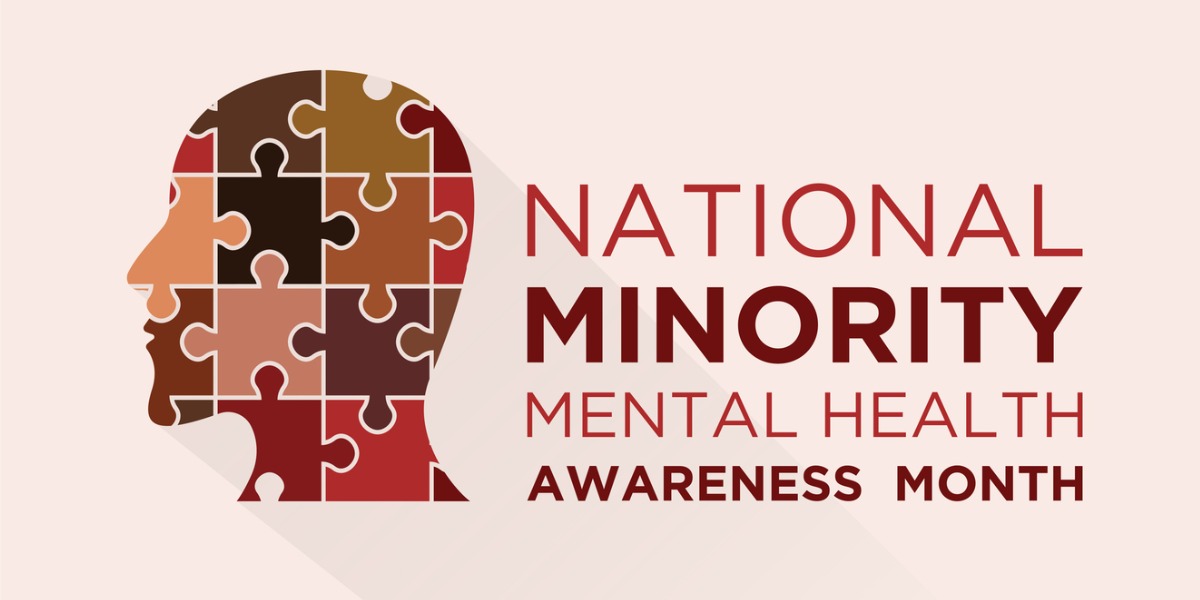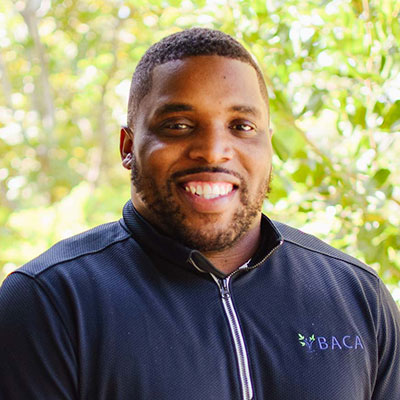Summary: In the U.S., we observe Minority Mental Health Awareness Month (MHAM) every year during the month of July.
Key Points:
- Congress enacted legislation to establish MMHAM in honor of mental health and minority rights activist Bebe Moore Campbell during the 2007-2008 session,
- 2025 is the 16th annual edition of MMHAM.
- Minority Mental Health Awareness Month 2025 (MMHAM 2025) shares a theme with Mental Health Awareness Month 2025: Turn Awareness Into Action
- Watch this video about Bebe Moore Campbell MMHAM.
- Downland and learn about minority mental health by reviewing the material on this reading list
Minority Mental Health Awareness Month 2025: Self and Community
The mental health advocates at Mental Health America (MHA) are the primary organizers of Minority Mental Health Awareness Month 2025, with additional support from the Substance Abuse and Mental Health Service Administration (SAMHSA), the National Alliance on Mental Illness (NAMI), the Centers for Disease Control (CDC), the Food and Drug Administration (FDA), and others.
During MMHMAH 2025, local, state, and national organizers encourage advocates to prioritize two goals:
- Take Care of Yourself
- Take Care of Your Community
These goals exist within the overall framework for MMHAH, established by Bebe Moore Campbell in 2009:
- Increase awareness about mental health needs and challenges specific to minority populations
- Address and reduce stigma around mental health treatment in minority communities
- Raise awareness about the lived experiences of members of minority communities in the U.S. about mental health and mental health treatment in minority communities.
In this context, the term minority refers to people in the following groups, designated by the acronym BIPOC:
- Black people
- Indigenous people
- People of color
In this article, we’ll review ideas about how members of minority groups can take care of themselves and take care of their communities during MMHAM. Before we share those tips, however, we’ll review the latest statistics on mental health among minority groups in the U.S.
Minority Mental Health, Distress, Disorders, Suicide: Prevalence Rates
The data below are available to the public from the SAMHSA National Survey on Drug Use and Health (NSDUH) here and from the Centers for Disease Control (CDC) here. We’ll include information on racial and ethnic minority groups first, and end each bulleted list with data for members of the majority race/ethnicity in the U.S., non-Hispanic White.
Past Year Serious Psychological Distress (SPD), 2023, Adults Age 18+
- Black: 11.4%
- American Indian/Alaska Native (AI/AN): 15.4%
- Hispanic: 13.8%
- Asian: 10.2%
- Pacific Islanders: 14.0 %
- White: 14.2%
In this set of data, we see rates of SPD fairly uniform among racial and ethnic groups, with AI/AN individuals showing the highest rates of SPD. Next, we’ll narrow the focus, and look at rates of clinical depression among minority groups.
Major Depressive Episode (MDE), 2023, Adults Age 18+
- Black: 6.5%
- American Indian/Alaska Native: 4.2%
- Hispanic: 8.3%
- Asian: 4.8%
- Pacific Islanders: 4.3%
- White: 9.1%
Here we see a significant difference between minority groups and the majority, with an exception: Hispanic individuals report at a percentage similar to that of White individuals. If we leave out Hispanic people, we see rates of MDE among minority groups at around half the rate of White individuals.
Next, we’ll look at rates of Any Mental Illness (AMI), defined as any clinical diagnosis of a mental or behavioral disorder defined in the Diagnostic and Statistical Manual of Behavioral Disorders, Volume 4 (DSM-4). For uniformity between editions, the NSDUH uses the DSM-4 rather than the updated DSM-5 and DSM-5 TR.
Any Mental Illness (AMI), 2023, Adults Age 18+
- Black: 19.4%
- American Indian/Alaska Native: 23.5%
- Hispanic: 20.6%
- Asian: 10.2%
- Native Hawaiian/Pacific Islanders: 16.1% (2021 figure)
- White: 24.0%
These figures show significant differences between groups, with AI/AN individuals reporting AMI at a rate similar to that of White individuals. In this data set, we’ll note that Asian people show the lowest rates of any clinical mental illness, reporting AMI at roughly half the rate of all other groups, with the exception of Native Hawaiian/Pacific Islanders.
The final set of prevalence/incidence data we’ll share includes rates of suicide fatalities in 2023.
Suicide Fatalities, 2023, Adults 18+
- Black: 9.1%
- American Indian/Alaska Native: 23.8%
- Hispanic: 8.2%
- Asian: 6.5%
- Native Hawaiian/Pacific Islanders: 3%
- White: 17.6%
Every suicide fatality is a preventable tragedy, and here we see a serious red flag for two minority groups: American Indian/Alaska Native (AI/AN) and Native Hawaiian/Pacific Islanders (NH/PI). NH/PI people show rates twice as high Hispanic and Black people and three times as high as Asian people, while AI/AN people show rates even night than that: three times as high as Hispanic people and four times as high as Asian people.
That’s all the prevalence data we have to share. Now let’s look at whether the people who needed treatment in 2023 got appropriate, effective, evidence-based support and care.
Minority Mental Health: Who Received Treatment?
We’ll preface this data by saying that in the U.S. today, across all racial and ethnic groups, there’s a significant treatment gap – meaning the difference between the number of people who need mental health treatment and the number of people who receive mental health treatment – that we need to work to resolve.
And by resolve, we mean close.
Here’s the data, which we’ll discuss below. We’ll include the data on members of the White majority again, for ease of comparison.
Received Mental Health Treatment: 2023
Any Treatment:
- Black: 15.1%
- American Indian/Alaska Native: 25.5%
- Hispanic: 17.0%
- Asian: 13.5%
- Native Hawaiian/Pacific Islanders: 6.1%
- White: 27.0%
Treatment With Prescription Medication:
- Black: 7.7%
- American Indian/Alaska Native: 15.3%
- Hispanic: 10.3%
- Asian: 6.5%
- Native Hawaiian/Pacific Islanders: 5.2%
- White: 20.6%
Among Minorities With MDE:
- Black: 56.1%
- American Indian/Alaska Native: n/a
- Hispanic: 52.2%
- Asian: 51.7%
- Native Hawaiian/Pacific Islanders: n/a
- White: 68.4%
Among Minorities with AMI:
- Black: 43.8%
- American Indian/Alaska Native: n/a
- Hispanic: 47.4%
- Asian: 34.7%
- Native Hawaiian/Pacific Islanders: 5.2%
- White: 58.7%
This an area where statistics reveal systemic inequity in the health care system in the U.S., and the mental health of minority groups suffers as a result. We’ll illustrate this by looking closely at the data on receiving treatment via prescription medication.
Consider these points:
- To get prescription medication, you need a prescription.
- To get a prescription, you need to see a doctor or professional mental health provider.
- In order to see a provider, you need access to care.
- Compared to majority racial/ethnic groups, many minority ethnic groups have reduced access to care.
- Reduced access to care among minority groups is influenced, among other things, by the social determinants of health (SDOH), i.e. non-medical factors related to the environments in which people are born, grow up, live, play, work, and grow old. SDOH also include systemic and structural features of communities that influence daily life.
Now look back at the data on prescription medication for mental health. Apart from AI/AN people, members of the white majority received prescription medication for mental health at rates 3-5 times higher than all minority groups.
That statistic is emblematic of the default circumstances for minority groups and mental health: there are serious inequities that need resolution – and that’s why we have awareness months like MMHAM.
How to Participate in Minority Mental Health Month 2025 (MMHAM 2025)
The theme of the month is turning awareness into action, with two goals for each person who participates: taking care of yourself and taking care of your community.
The organizers at Mental Health America (MHA) offer these five suggestions for taking care of yourself:
- Learn as much as you can about minority mental health with this resource: BIPOC Mental Health.
- Engage in spiritual practices that resonate with you.
- Free your body through movement and rhythm with dance, group exercise classes, or drum circles.
- Embrace cultural connections through activities like braiding hair, cooking, and storytelling and oral traditions as ways to process trauma and preserve memory
- Connect with nature: try gardening, taking a barefoot walk, or simply spending more time outside, preferably where you can see trees or a natural body of water
In addition: Seek professional support with this resource for inclusive therapists
We’ll close this article with these five suggestions from MHA for taking care of your community:
- Education: raise the bar for yourself and your community by learning everything you can about minority mental health with the wide range of free online resources, like the article you’re reading now.
- Advocacy: when the topic of mental health comes up at neighborhood events, school, or during community activities, share what you know about the specific needs of minority groups
- Be an Ally: Learn how to support someone in a crisis by understanding how to access emergency care and support, or volunteer for a crisis hotline and learn crisis support skills you can use yourself
- Share Your Story: if you have direct personal experience with mental illness and treatment, teach people in your community how to check-in on mental health, and help members of your community make mental health check-ins a regular part of daily life.
- Show Up: participate actively in any community support groups, peer support groups, or public initiatives that promote minority mental health awareness.
Those ten steps can change you and change your community for the better. Remember, knowledge reduces stigma, reduced stigma means more people will seek treatment, and when more people seek treatment – more people benefit. That’s how we can all work to improve minority mental health during MMHAM 2025.
Finding Help: Minority-Specific Resources
- Blackline: Promotes social justice during crisis intervention.
- Phone: 1-800-604-5841
- Website: Call BlackLine—Crisis Call Line
- Naseeha: offers 24/7 mental health support for Muslim people.
- Phone: 1-866-627-3342
- Website: Naseeha Mental Health
Finding Help: General Resources
If you or someone you love needs mental health support, you can call us here at BACA for a free screening. In addition, you can find support through the following online resources:
- The National Alliance on Mental Illness (NAMI): Find a Professional
- The National Institute of Mental Health (NIMH): Finding Treatment
- The Substance Abuse and Mental Health Services Administration (SAMHSA): Finding Help
- American Psychiatric Association (APA): Treatment Locator
- SAMHSA: Early Serious Mental Illness Treatment Locator


